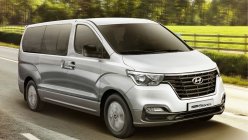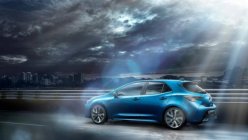When you talk about ubiquitous cars, very few come close to the Toyota Corolla. With more than 49 million units sold worldwide, it’s a testament to the dependability and build quality that many customers have come to associate with the brand. Granted, the Corolla isn’t the flashiest sedan out there, but its continuing mass-market appeal means that many still place a premium on function over form.

The Toyota Corolla's appeal endures even after 12 generations
The Corolla (Latin for small crown) was derived from the Toyota Crown, itself the longest-running passenger car nameplate in the automaker’s stable. Over 50 years and 12 generations later, the Corolla is still living up to its name as the king of the compact passenger car hill. We take a look back at the Corolla’s journey.
HISTORY OF TOYOTA COROLLA
First Generation Toyota Corolla (1966 - 1970)
The “small car that could” made its Japanese debut in 1966, with a slogan that proved to be a mouthful even by today’s standards: The most wanted car by the market – presented to the world by bringing the essence of Toyota’s technology.
The original Corolla adopted a semi-fastback body style for its two-and four-door models. There was also a two-door estate version. The bodies were prepared with both an electrophoretic and electrostatic body coating. Inside, the Corolla offered amenities such as armrests, center console, radio, and heater. A floor-mounted shifter was introduced (the first for a Japanese vehicle), and the generous rear seating was compared to a living room sofa.

Toyota wanted to give its new subcompact a premium feel over its rivals
A 1.1L engine with five-bearing crankshaft and high-mounted camshaft made 59 hp and 93 Nm of torque. The extra 100cc was Toyota’s way of thumbing its nose at the Datsun 1000 and Subaru 1000 back then, although it meant putting the Corolla at a higher tax bracket.
Still, the gamble paid off, as the new model was well-received by the public. A new 1.2L engine generating 67 hp was introduced in the latter half of this period, as well as front disc brakes – a first for a Japanese family car.
It wasn’t all smooth sailing for Toyota in those days. The development team had no reference for mounting the MacPherson front suspension, and one prototype traveled half a kilometer before the suspension failed. Repeated improvements and testing eventually overcame the challenges, and within three years the Corolla became the top-selling vehicle in Japan.
>>> Related:
- How the Ford Ranger has changed since 1998
- How the Toyota Hilux has changed since 1968
- How the Toyota RAV4 has changed since 1994
Second Generation Toyota Corolla (1970 - 1974)
Despite having a winner on its hands, Toyota refused to rest on its laurels, introducing the second-generation Corolla in 1970. With the Japanese economy experiencing a boom, personal mobility was becoming increasingly important, and the automaker wanted to capitalize on this by building on the model’s reputation.
Bigger exterior dimensions defined the second-generation Corolla, and a new coupe body style was added. The front seats were improved with increased sliding range and higher seatbacks, while AM/FM car stereo, air-conditioning, and windscreen washers were integrated into the second-generation Corolla.
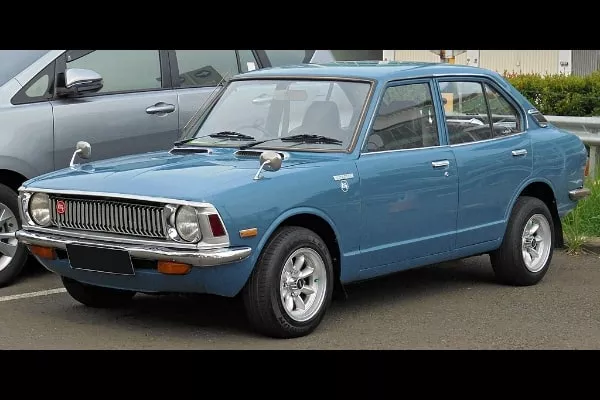
The second-generation Corolla built on its predecessor's gains
Engine choices included the standard 1.2L and a 1.4L good for 85 hp and 115 Nm of torque. A larger 45-liter fuel tank was also installed for extended range and fewer fuel stops.
In 1972, the high-performance Corolla Levin variant was introduced, fitted with a Solex-carburetted 1.6L 2T-G twin-cam capable of 113 hp and 142 Nm of pull, necessitating the use of a five-speed transmission and improved disc brakes. The Levin would find success in motorsports, especially in the 1,000 Lakes Rally of 1975.
>>> Related: Toyota Corolla Big body: The perennial family sedan
Third Generation Toyota Corolla (1974 - 1979)
The “ultimate family car” was how Toyota billed its third-generation Corolla, which not only had to contend with the success of the first two generations, but with stricter emissions regulations following Japan’s adoption of the U.S. Clean Air Act.
A more angular body style was used, developed through wind tunnel testing for the first time. The coupe variant removed the B-pillar, and a liftback style intended to carry short-style surfboards which were becoming popular at the time.
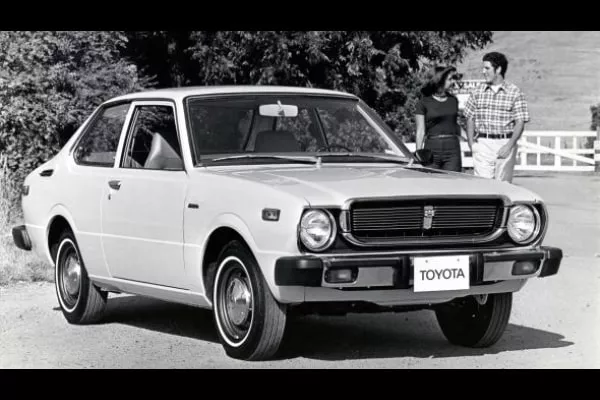
The third-generation Corolla addressed increasingly stringent emissions standards
The interior had ample headroom thanks to a one-piece molded headliner, and switches were relocated to the center console. A foot-operated device tipped the front seats for improved access to the rear. Passenger comfort was improved with better noise, vibration, and harshness (NVH) levels. Passive safety features were adopted, such as an impact-absorbing body structure and three-point emergency locking retractor seat belts.
A new engine lineup was adopted, equipped with the Toyota Total Clean System to reduce emissions. Even the Levin’s 2T-G power plant was fitted with an oxidation catalyst and electronic fuel injection to become the 2T-GEU. It delivered a maximum output of 108 hp and 142 Nm of torque.
Fourth Generation Toyota Corolla (1979 - 1983)
The fourth-generation Corolla’s release came just as when Japan was recovering from the worldwide oil crisis. Conceived as an economical yet luxurious car for the family, the model offered five body styles: sedan (two- and four-door), hardtop, coupe, liftback, and van. An estate (wagon) version was added in 1982.
>>> Related: How to classify cars according to body type
A clean, boxy style with sleek lines defined the new Corolla, with urethane bumpers used for their impact absorption. The aerodynamic body achieved a drag coefficient of 0.35 Cd. The interior was also reworked, integrating all instrument gauges under a single lens. Seating was improved with height adjustment, lumbar support, and a tilt-steering mechanism.
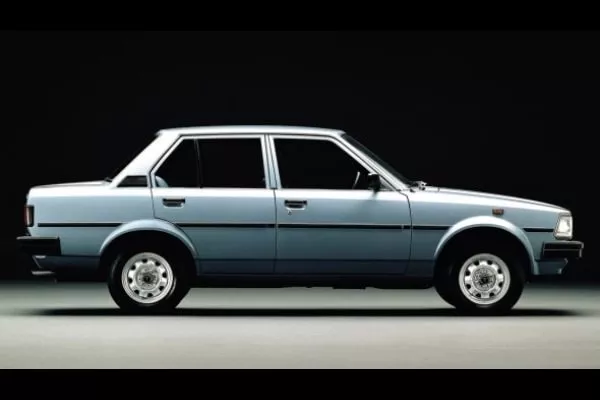
The fourth-generation model introduced a diesel option for the first time
Originally planned to carry the 1.5L 1A-U engine used by the Tercel, the new Corolla was instead assigned the new 1.5L 3A-U engine making 79 hp and 115 Nm of torque. This was accompanied by a 1.3L engine and the 1.6L 2T-GEU carried over from the previous generation.
he rear leaf springs were replaced to a four-link suspension with lateral rod, prompted by a comparison of the Corolla’s suspension with the leaf springs of a horse-drawn carriage.
Towards the end of production, the first diesel Corolla was released, with a 1.8L 1C that used alloy cylinder heads and a direct-drive valve operating system. The engine was mated to either a five-speed manual or four-speed automatic with overdrive.
Fifth Generation Toyota Corolla (1983 - 1987)
In May 1983, the fifth-generation Corolla broke cover, bringing about the most comprehensive model change in the badge’s history. Computer technology was used in designing the exterior, developing the engines, and managing control of the engine and gearbox.
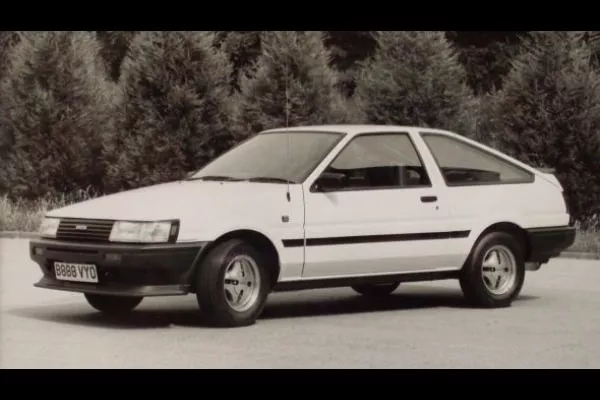
The fifth-generation also spawned the now-iconic AE86 Sprinter Trueno
A front-wheel drivetrain was used for the hatchback, liftback, and sedan models, while rear-wheel-drive was retained on the coupes. The slanted nose and rounded wedge silhouette became this Corolla’s signature.
Interior space was maximized by a lowered floor, moving the steering wheel forward, and adopting a more vertical rear window. Central door locking and power front windows became standard equipment.
The engine lineup for front-wheel-drive models included the 1.3L 2A-LU, 1.5L 3A-LU, and a 1.6L 4A-ELU with electronic fuel injection. The latter benefitted from the Toyota Computer Controlled System (TCCS) that electronically controlled the ignition spark timing. In markets such as Japan, Europe, and North America, the diesel Corolla continued to be offered.
>>> Related: The DEFINITIVE 5 best 2nd hand cars to buy in the Philippines this 2020
Sixth Generation Toyota Corolla (1987 - 1991)
Rear-wheel-drive would finally bow out of the Corolla range by the seventh-generation, now offered in either front-wheel or all-wheel-drive. The new model was a result of over 2,000 proposals by the development team working with more than 100 parts manufacturers. This was in response to the newly-promoted development chief Akihiko Saito’s requirement of a Corolla that had the ride comfort of the Crown and the aesthetics of the Mark II.
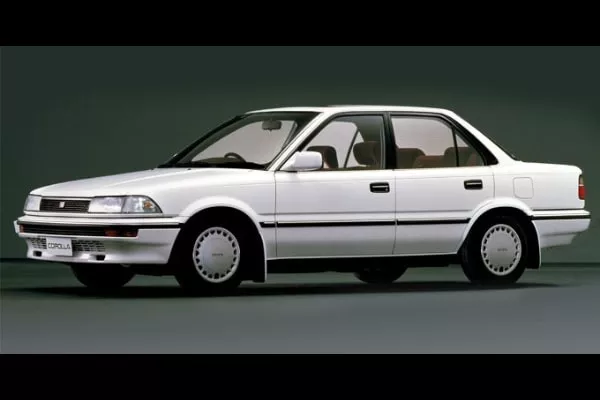
The sixth-generation Corolla did away with rear-wheel-drive
The new model featured rounded edges, featuring a wide and low stance, with a prominent shoulder line giving the illusion of length. Extensive soundproofing further improved the interior, with a more ergonomic placement of instruments, as well as easy-to-reach controls. Storage spaces were also increased for convenience.
Engines ranged from a 1.3L 2E, 1.5L 5A (carburetted and fuel-injected), 1.6L 4A (naturally aspirated and turbocharged), and 1.5L 3E for the van model. The 1.8L 1C diesel continued to be offered. Manual transmission units were equipped with a mechanical center differential lock, while the automatic transmission models had a hydraulic differential to channel torque to the rear axle.
>>> Check out our list of pre-owned Toyota Corolla for sale at cheap prices
Seventh Generation Toyota Corolla (1991 - 1995)
By this time, the Corolla was already the most popular car globally, with around 4,300 units produced every day worldwide.
Aiming for a “mini Lexus” look, the development team took inspiration from the Lexus LS 400, with a more curvy design integrated into the bodywork. The headlamps were made of polycarbonate, and the front bumper was integrated into the galvanized steel body. The number of external panels was also streamlined.
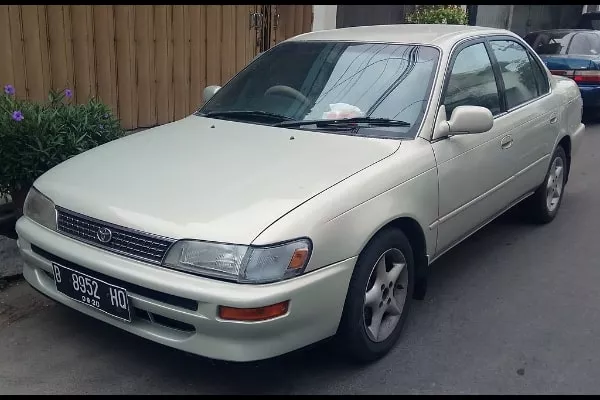
The seventh-generation Corolla had a more aerodynamic shape than the previous model
Inside, the cabin interior was intended to be the quietest in its class. An increase in overall dimensions resulted in more space for passengers. Trunk space for the sedan model measured at 420 liters, the biggest on offer.
The seventh-generation Corolla came with 1.3L and 1.6L engines, mated to a five-speed manual or a four-speed automatic. A new 2.0L diesel engine was introduced in March 1993 for the U.K. market.
Eighth Generation Toyota Corolla (1995 - 2000)
Extensive computer analysis was used to design the eighth-generation Corolla, optimizing the body structure for weight savings of up to 70 kgs. compared to the outgoing model.
Design inputs from Europe resulted in a more stylish aesthetic, with the European market version being recognized internationally on account of media coverage of the World Rally Championship where Toyota scored a manufacturer’s win in November 1999.
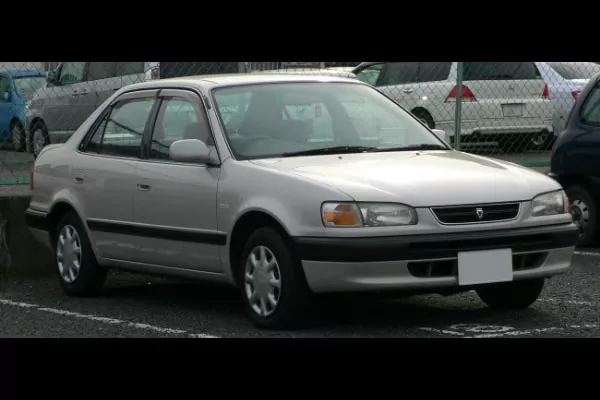
The eighth-generation Corolla carried over the previous model platform to cut costs
The revised engine lineup now comprised a 1.3L engine with 85 hp and up to 120 Nm of torque, a 1.6L 16-valve engine with 109 hp and 142 Nm of torque, and a 2.0L diesel with 71 hp and 131 Nm of torque. Standard features included dual airbags, electronic seat belt pretensioners, three-point center seat belts at the rear, and remote central locking.
>>> Related: 5 best used cars for beginners in the Philippines
Ninth Generation Toyota Corolla (2000 - 2006)
The odds were not good for the Corolla at the turn of the millennium; even with Toyota selling 28 million units sold worldwide, the Japanese economy was at a slump, and families were opting for multi-purpose vehicles (MPVs). Those who had money to spend on a new car were getting older. These were the challenges for the eighth-generation model to overcome.
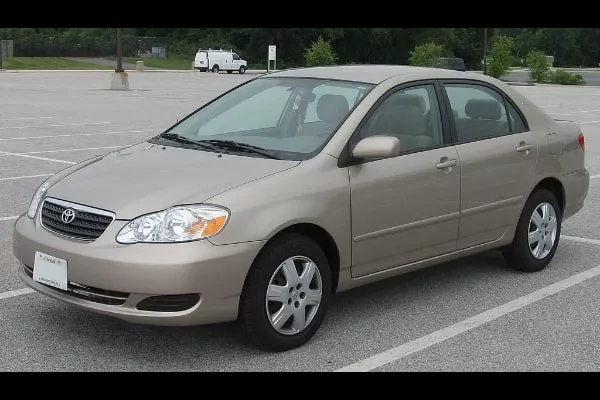
Actor Brad Pitt drove the ninth-generation Corolla in a TV commercial
Utilizing an all-new platform, the Toyota Corolla 2000 - 2006 was the first to be designed in Europe. It began with sedan and estate options in Japan, eventually joined by a three-and five-door hatchback, MPV, and soft-roader versions.
The wheelbase was extended by 135 mm, the overhangs were reduced, and the average roof height increased by 90 mm. Aerodynamics were aided by a flat underbody and ensuring that merging points for the pillars, roof, and glass were flush with the rest of the body.
Soft-touch plastics were used in the cabin, with more visible switches. Optitron gauges, first seen on Lexus flagship models, were implemented in the Corolla. A total of nine engines with varying degrees of availability were installed, with gasoline units equipped with intelligent variable valve timing and diesel units using common-rail technology. The coupe body style was removed, as well as the acclaimed 4A-GE twin cam engine.
>>> Related: Check out Toyota Corolla 2015 for sale here.
Tenth Generation Toyota Corolla (2006 - 2012)
The tenth-generation model was split in two: the standard E140 chassis for Japanese markets which complied with government regulations, and the bigger E150 platform for overseas markets, the latter being bigger than the first-generation Camry.
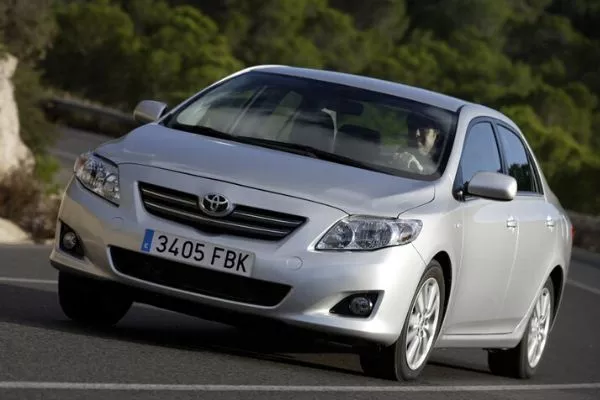
Tenth-generation Corollas for the Japanese market were equipped with millimeter-wave radar
A more angular exterior based on the Camry emerged, with the overseas models retaining the Japan-market interior. In the Philippines, the new model was launched in 2008. It was initially offered in our market with 1.6L and 2.0L engines, with a five-speed manual and four-speed automatic. In 2010, the PH-spec Altis was revised with a CVT replacing the automatic transmission, and the manual gearbox earning one more forward gear.
>>> Related: Car of the Week | 2010 Toyota Corolla Altis 1.6G
Eleventh Generation Toyota Corolla (2012 - 2018)
The eleventh-generation Corolla Altis spanned various markets with the designations E160, E170, and E180. Sporting an international design, its stylistic elements were previewed in the Toyota Furia concept, with the raked windshield and sloping roofline.
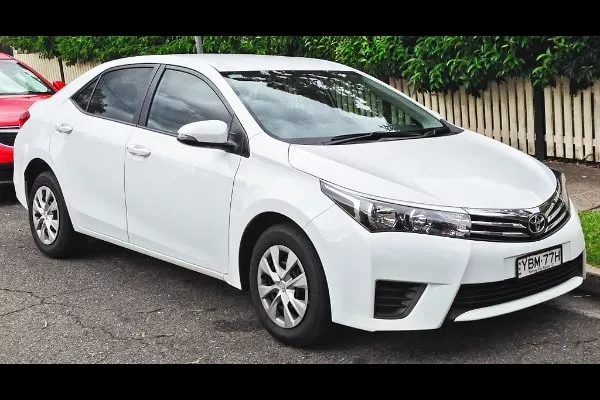
Hybrid drivetrain technology became an option on the eleventh-generation Corolla
Apart from still sporting smaller dimensions to meet government regulations, Japanese domestic market versions came with a hybrid option, mated to an E-CVT. Other engines included 1.3L, 1.5L, and 1.8L options, with a choice of either five-speed manual or a Super CVT-i with Sport mode. Meanwhile, overseas versions included a 1.2L turbocharged gasoline and a 2.0L diesel engine, with a 1.8L hybrid and flex-fuel versions.
Twelfth Generation Toyota Corolla (2018 - Present)
The current Toyota Corolla Altis is built on the Toyota New Global Architecture (TNGA) platform shared with the Lexus UX. The latest model is offered in sedan, hatchback, and station wagon body styles across a variety of markets.
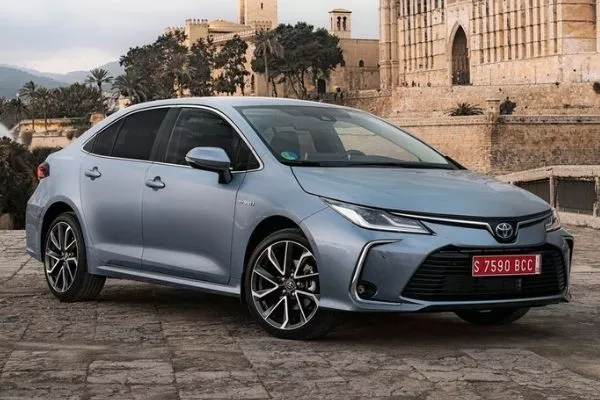
Japanese versions of the twelfth-generation Corolla come with all-wheel-drive
No less than 11 engines are available for the latest Corolla, including 1.8L and 2.0L hybrid power plants (the diesel option has been discontinued). The range of gearboxes include a six-speed manual, seven-speed simulated CVT, E-CVT, and a seven- and eight-speed Super CVT-i.
Japan-spec models can be had with optional all-wheel-drive and a 1.2L turbocharged engine, while U.S. market versions are equipped with Amazon Alexa and the Toyota Safety Sense (TSS) 2.0 suite of driver-assist technologies. For Filipino customers, the new model is offered in five trims, with the range-topping variant as a hybrid model.
Catch more interesting bits of automotive history at Philkotse.com.
Recent posts
- Toyota Corolla Altis 2020: Compact Sedan contender for Car of the Year Mar 09, 2022
- All sedan cars of Toyota Philippines with price list & brief review Sep 28, 2023
- Sedan cars in the Philippines | Example of the most affordable and most fuel-efficient Sep 13, 2022
- Toyota updates 200,000 km/5 year warranty for Toyota Corolla Altis Hybrid 2020 batteries Sep 15, 2020
- Toyota Motors Philippines officially unveils the Toyota Corolla Altis 2020 Aug 18, 2023


